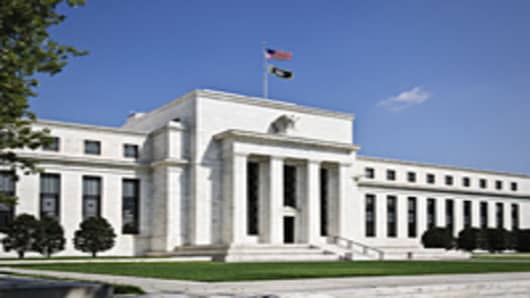The Federal Reserve’s attempt to push aid into the heart of the US economy is being blunted by banks struggling to process mortgage applications fast enough, keeping rates on home loans elevated, according to the largest lenders.
The Fed announced last week that it would buy mortgage-backed securitiesin another round of quantitative easing — nicknamed QE3.
This was partly designed to ease further the cost of mortgages, but bankers say the impact will be limited by a dearth of loan officers with banks reluctant to cut mortgage rates without the staff to process any increase in business.
“In the very near term [QE3] has virtually no transfer mechanism whatsoever to the customer,” said one executive at a leading lender, who requested anonymity. “Originators are massively backlogged in terms of origination volumes.”
Steven Abrahams, MBS analyst at Deutsche Bank, noted that the yield on mortgage-backed securities fell more than 30 basis points after the Fed announcement.
“Very little of that is likely to make it through immediately to consumers,” he said. “There’s nothing that will force mortgage originators themselves to lower the rates that they’re offering to consumers. Right now they have their hands pretty full in terms of the pipeline and managing paperwork and making loans. These folks are busy. There’s not a bunch of people on long cigarette breaks.”
MBS prices are rising because of QE3, and banks enjoying healthy profits bundling mortgages into securities. This has helped bank stocks.Wells Fargo, the biggest US home-mortgage lender, rose 3.6 percent over the course of last week and Citigroup and Bank of America shares were both up more than 8 percent. JPMorgan stock jumped 6 percent.
A Freddie Mac mortgage rates survey last week found an average 30-year fixed-rate mortgage was 3.55 percent compared with 3.92 percent in January and more than 5 percent at the start of 2010. Although the loan rate looks low, the spread between the mortgage rate for consumers and the yield on MBS is higher than it used to be.
They will have to wait for it, though. Banks acknowledge privately that the standard time between agreeing a loan and it closing has risen from about a month to as much as three months.
Yields on MBS guaranteed by Fannie Mae, the government-controlled finance agency, dipped briefly below 2.1 percent on Friday. The difference between the two rates, almost 1.5 percentage points, has typically been 0.5 percentage points.
Some of the increased spread is likely to be permanent, say bankers, because costs have risen along with higher standards imposed by regulators.
Wells Fargo and JPMorgan, responsible for almost half new loans, are moving thousands of staff to the frontline of mortgage origination but are still struggling to cope, analysts say.
Bank of America, meanwhile, has shied away from the opportunities of writing new loans, dramatically scaling back a business whose past missteps still plague the company.
The volume of mortgage bank shares trading hands surged on Thursday, when the Fed announced its new program.
Mortgage executives say, though, that they would rather take advantage of the environment to boost loans. “We would love nothing more than to double the volume of origination right now,” said one.
Investment banks such as Goldman Sachs and Morgan Stanley are also expected to benefit from the new easing. The banks make much of their money from underwriting the debt or stock offerings of big corporate clients and such business could increase after the central bank actions. Rising asset prices could also bolster their balance sheets.
Although QE3 is aimed squarely at mortgage-backed securities, Ben Bernanke, Fed chairman, did not play up the effect on mortgages in his press conference, saying that QE can bring down “a whole range of rates.” He said it can affect equity and house prices, as well.
Even if the transmission of monetary policy via housing is weak, it works by other channels as well, most obviously pushing stock prices up and the dollar down. The first will make households feel wealthier and should boost consumption; the latter makes U.S. exporters more competitive.
The Fed is well aware of the spread between the primary and secondary mortgage rates. Indeed, that spread explains some of its interest in the Bank of England’s “funding for lending” scheme, which will offer cheap finance to banks that lend more.
So far, however, nobody has come up with a version that could work in the U.S. — where banks that want to lend already have ample supplies of cheap funds — although the Fed continues to study the idea.


